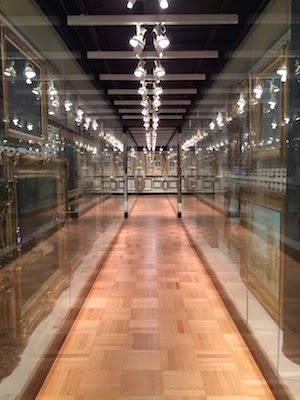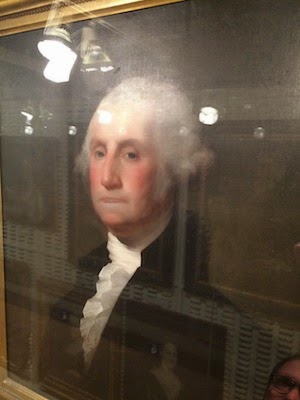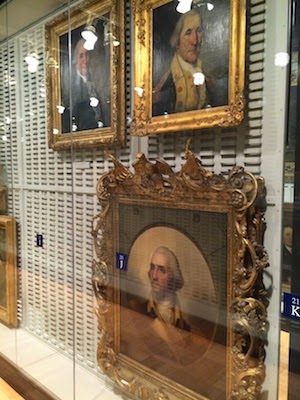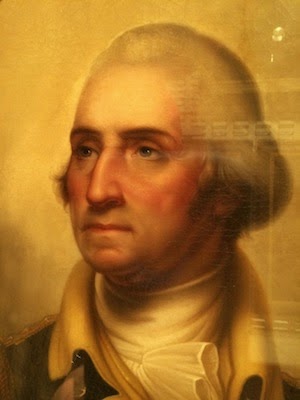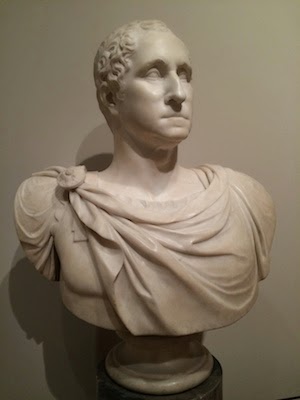 |
| Bust of George Washington at New York’s Metropolitan Museum of Art |
His face is probably the most recognizable, anywhere in the world, of that of any political figure in history. We’d like to think it’s because of the ideals he stood for, the principles he instilled into the United States of America. But the practical explanation is, of course, that his visage is nearly synonymous with the most ubiquitous currency in the world, the American dollar bill.
Starting with visits to Mount Vernon and Valley Forge, our winter road trip practically became the “George Washington” trip. It was appropriate, then, that as we made our way home and stopped in New York City, we were treated to a treasure trove of images of our most famous of founding fathers.
Imagine strolling through a museum, and desiring of escaping the crowds you pass into what looks like a side room. While it’s obviously open to the public, owing to the rows and rows of long, glass cabinets–and that you’re apparently the only soul around–it feels much more like a warehouse, like the massive hidden stores of precious art you read are the unseen bulk of places like the Louvre and the Vatican Museum. It looks like this:
Then, by accident, you come across this portrait:
It is one of the most famous portraits in the world: George Washington, painted by Gilbert Stuart in 1803. And you found it by accident. Washington’s resolve and aura is captured magnificently in his eyes, and the discomfort of his dentures seems apparent on his lips. The whole image wonderfully captures and portrays the greatness we associate with George Washington.
This is what happened to us, and it was one of the things that made our experience at New York’s Metropolitan Museum of Art so special. Stuart’s portrait was, in fact, just one of a cluster of portraits of Washington.
The grouping included this more youthful depiction of our first president by Rembrandt Peale:
He’s not a spring chicken, but Peale portrays Washington with much more vigor and vitality. Instead of peering directly out of the canvas at you, as he does in Stuart’s depiction, he gazes off to the side. While Stuart’s Washington portrays the founding father’s greatness with austerity, Peale portrays it with a sense of leadership that seems to say, “Come, follow me.” And there’s no hint of denture pain: in fact, Peale’s Washington almost has a confident smirk.
This isn’t to say that all the portraits of Washington are stuck in this side room along with hundreds (thousands?) of other portraits the museum has collected. Like Washington Crossing the Delaware, which you saw in our blog a few days ago, there are no shortage of images of this founding father found in the Metropolitan Museum of Art in New York. We’ll leave you today with a few of those images, and a couple of others we found along our winter road trip. Do you recognize them?
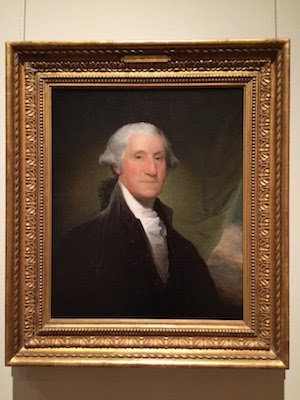 |
| George Washington, Also by Gilbert Stuart |
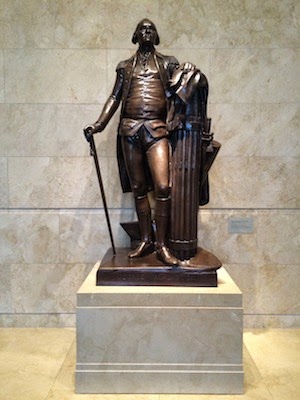 |
| Statue of Washington at Mount Vernon, VA |
 |
| Another Gilbert Stuart Portrait of Washington |
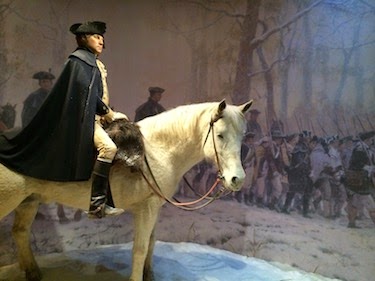 |
| Washington at Valley Forge Display, Mount Vernon, VA |


